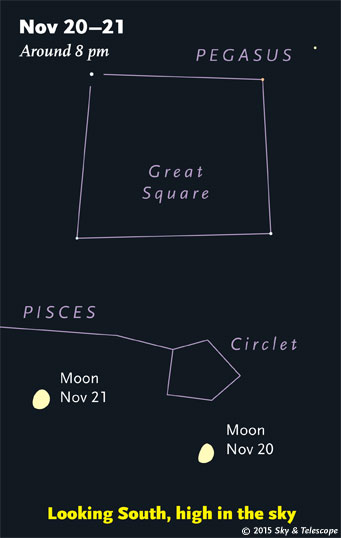
Friday, November 20
• Before dawn tomorrow morning, look east for bright Jupiter and brighter Venus. Between them is little orange Mars. Look carefully; very close to Mars is the 4th-magnitude star Eta Virginis. The two may appear less than 0.1° apart depending on where you are.
• If Mars seems to be awfully slow to brighten as it moves higher in the dawn this season, that's because it's at the aphelion of its orbit, its farthest from the Sun — exactly so today.
Saturday, November 21
• After dark these nights, Altair is the brightest star in the west-southwest. Look upper left of it, by barely more than a fist at arm's length, for the delicate little constellation Delphinus, the Dolphin. To Altair's upper right by a lesser distance is little Sagitta, the Arrow.
Sunday, November 22
• Whenever Fomalhaut is "southing" (crossing the meridian due south, which it does around 7 p.m. now depending on your location), the first stars of Orion are just about to rise in the east, and the Pointers of the Big Dipper stand vertical straight below Polaris, due north.
Monday, November 23
• Look above or upper left of the gibbous Moon this evening for the two leading stars of Aries. Farther left of the Moon is the Pleiades cluster with Aldebaran down below it. Much farther left shines bright Capella.
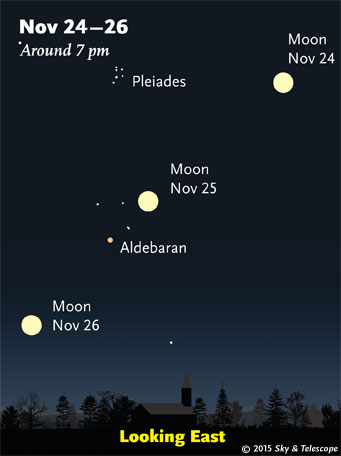
Tuesday, November 24
• The almost-full Moon this evening shines not quite midway between the Pleiades to its left and Alpha Ceti (orange-tinted Menkar) to its right. Menkar is well off the edge of the scene here.
• Algol is at minimum brightness, magnitude 3.4 instead of its usual 2.1, for a couple hours centered on 10:15 p.m. EST (per new predictions).
Wednesday, November 25
• The full Moon blazes in the Hyades tonight. The Moon occults Aldebaran on the morning of Thursday the 26th for telescope users in Canada and the northern half of the U.S.; see the November Sky & Telescope, page 45.
Thursday, November 26
• Does night already seem to be falling about as early as it ever will? You're right! We're still almost a month away from the winter solstice — but the Sun sets its earliest of the year around December 7th, and right now it already sets within only about 2 minutes of that time (if you're near latitude 40° north).
A surprising result of this: The Sun actually sets a trace earlier on Thanksgiving than on Christmas, even though Christmas is around solstice time!
This offset is made up for by the opposite happening at sunrise: the Sun doesn't come up its latest for the year until January 7th. Blame the tilt of Earth's axis and the eccentricity of its orbit.
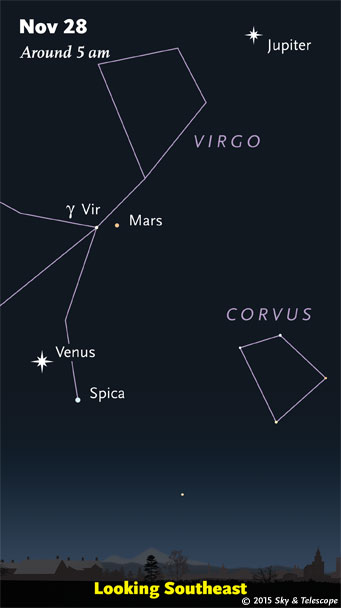
Friday, November 27
• Venus shines within 5° of Spica in early dawn from tomorrow morning through the morning of Wednesday December 2.
• Algol is at minimum brightness, magnitude 3.4 instead of its usual 2.1, for a couple hours centered on 7:04 p.m. EST (per new predictions).
Saturday, November 28
• By 8 or 9 p.m. the waning gibbous Moon, in Gemini, is up in the east-northeast. Look left of it and perhaps a bit higher for Castor and Pollux. Farther to the Moon's right or upper right, Orion is moving up.
__________________________
Want to become a better astronomer? Learn your way around the constellations. They're the key to locating everything fainter and deeper to hunt with binoculars or a telescope.
This is an outdoor nature hobby. For an easy-to-use constellation guide covering the whole evening sky, use the big monthly map in the center of each issue of Sky & Telescope, the essential guide to astronomy.

Once you get a telescope, to put it to good use you'll need a detailed, large-scale sky atlas (set of charts). The standards are the little Pocket Sky Atlas, which shows stars to magnitude 7.6; the larger and deeper Sky Atlas 2000.0 (stars to magnitude 8.5); and once you know your way around, the even larger Uranometria 2000.0 (stars to magnitude 9.75). And read how to use sky charts with a telescope.
You'll also want a good deep-sky guidebook, such as Sue French's Deep-Sky Wonders collection (which includes its own charts), Sky Atlas 2000.0 Companion by Strong and Sinnott, the bigger Night Sky Observer's Guide by Kepple and Sanner, or the beloved if dated Burnham's Celestial Handbook.
Can a computerized telescope replace charts? Not for beginners, I don't think, and not on mounts and tripods that are less than top-quality mechanically (meaning heavy and expensive). As Terence Dickinson and Alan Dyer say in their Backyard Astronomer's Guide, "A full appreciation of the universe cannot come without developing the skills to find things in the sky and understanding how the sky works. This knowledge comes only by spending time under the stars with star maps in hand."
This Week's Planet Roundup
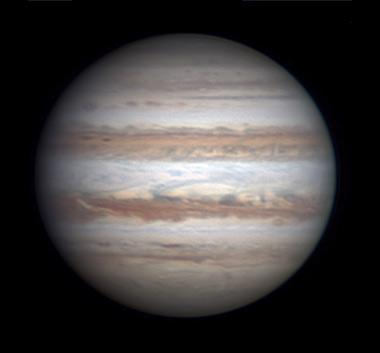
Mercury is hidden in superior conjunction with the Sun.
Venus, Mars, and Jupiter continue their display in the east before and during dawn, forming a great diagonal line as shown above. Venus is the lowest and brightest, shining at magnitude –4.3. Jupiter, high to the upper right, is –1.9, and Mars, between them, is much fainter at +1.6.
Watch the line lengthening. Venus is descending; Jupiter and Mars are moving higher. So is Spica; look for it below or lower right of Venus.
Saturn is lost in the glow of sunset.
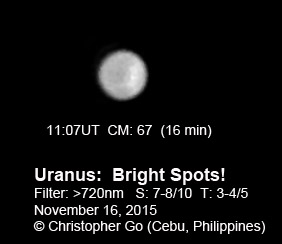
Uranus (magnitude +5.7, in Pisces) and Neptune (magnitude +7.9, in Aquarius) are high in the southern sky during early evening. Finder charts for Uranus and Neptune.
__________________________
All descriptions that relate to your horizon — including the words up, down, right, and left — are written for the world's mid-northern latitudes. Descriptions that also depend on longitude (mainly Moon positions) are for North America.
Eastern Standard Time (EST) is Universal Time (UT, UTC, or GMT) minus 5 hours.
__________________________
“This adventure is made possible by generations of searchers strictly adhering to a simple set of rules. Test ideas by experiments and observations. Build on those ideas that pass the test. Reject the ones that fail. Follow the evidence wherever it leads, and question everything. Accept these terms, and the cosmos is yours.”
— Neil deGrasse Tyson
 1
1
Comments
November 20, 2015 at 5:54 pm
Don't forget this week is probably our first chance to see comet C/2013 US10 (Catalina) from mid-northern latitudes. It's peeking above the horizon and slowly making its way toward Venus before dawn. Probably not the best week for ease of finding it, though.
You must be logged in to post a comment.
You must be logged in to post a comment.